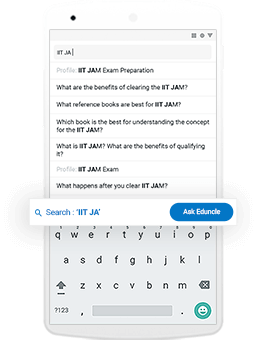Time management is very much important in IIT JAM. The eduncle test series for IIT JAM Mathematical Statistics helped me a lot in this portion. I am very thankful to the test series I bought from eduncle.
Nilanjan Bhowmick AIR 3, CSIR NET (Earth Science)
S
Soumadeep Nag posted an Question
February 01, 2023 • 00:39 am
![]() 30 points
30 points
- IIT JAM
- Geology (GG)
What is low velocity zone ? explain it
what is low velocity zone ? explain it with properly
0 Answer(s)
Answer Now
- 0 Likes
- 1 Comments
- 0 Shares
-
M
T
Do You Want Better RANK in Your Exam?
Start Your Preparations with Eduncle’s FREE Study Material
- Updated Syllabus, Paper Pattern & Full Exam Details
- Sample Theory of Most Important Topic
- Model Test Paper with Detailed Solutions
- Last 5 Years Question Papers & Answers
Sign Up to Download FREE Study Material Worth Rs. 500/-

















Mayank Mishra
Low Velocity Zone (LVZ) is a layer of the Earth's upper mantle that exhibits lower seismic velocities than the surrounding rocks. Here are some pointers to help understand LVZ: LVZ is also known as the "Astheno-sphere" and is considered a boundary between the Earth's rigid lithosphere and its convecting mantle. The physical properties of LVZ include high temperature, partial melting, and the presence of partially molten materials, such as magma. The rocks in the LVZ are also under high pressure and stress due to the movement of tectonic plates. LVZ is located beneath the Earth's crust and extends from a depth of about 100 km to 250 km below the surface. The range of LVZ can vary from region to region, but it is generally around 150 km thick. The compositional change in the LVZ is due to the partial melting of the mantle rocks, leading to a change in the physical properties of the materials. The LVZ has an effect on gravity and density, as the presence of partially molten materials can cause a reduction in density, leading to a decrease in gravity in the region. This can also lead to changes in the viscosity and flow of the mantle materials, influencing the movement of tectonic plates. In summary, the Low Velocity Zone is a layer of the Earth's upper mantle that exhibits lower seismic velocities than the surrounding rocks, due to the presence of partially molten materials, high temperature, and pressure. Its location, range, and effect on gravity and density make it an important area of study for geologists and seismologists.